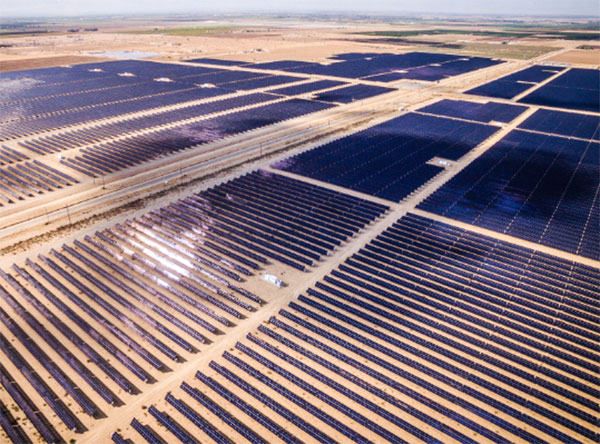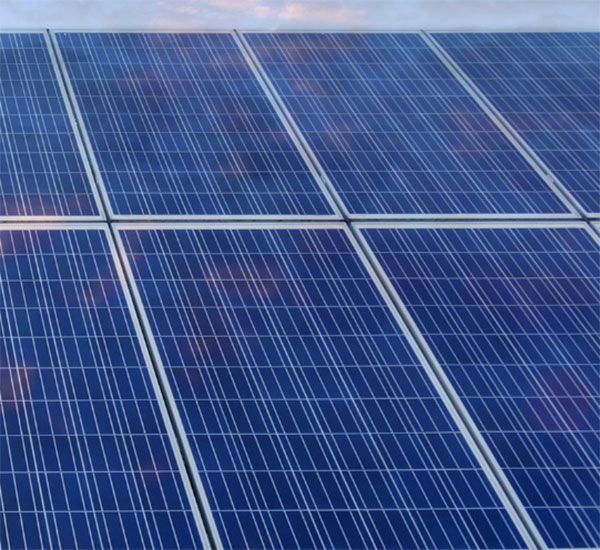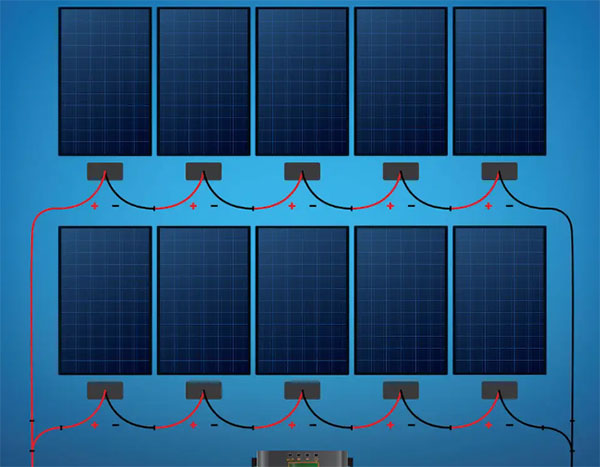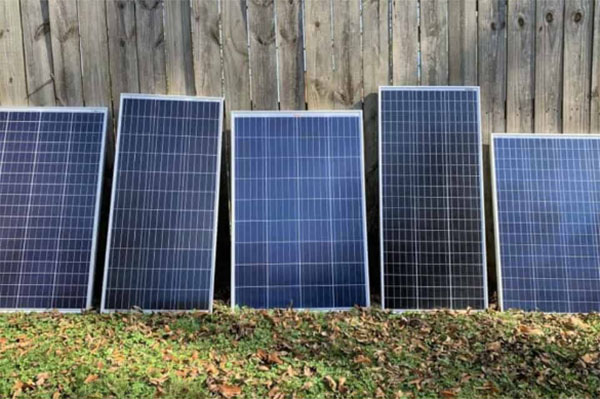Description
In solar cells, voltage is the potential difference driving electron flow, while current measures the flow rate of these electrons.Basics of Solar Cells
How Do Solar Cells Work?
The fundamental process of converting solar energy into electricity is based on the photovoltaic effect. When a photon from sunlight hits the surface of a solar cell, it transfers its energy to electrons, which become excited and move to a higher-energy state.
As a result, a flow of electric current is formed when these electrons travel through the external circuit . The average efficiency of this process ranges from 15% to 22% in commercially available solar panels, with lab-scale prototypes reaching over 26% efficiency.
What is a Solar Cell?
A solar cell consists of a combination of several materials and components, including:
Semiconductor Material: The most common choice is silicon, which is doped with other elements to produce a p-n junction or to enhance certain properties. The efficiency of the material, how much it costs, and its typical lifetime play a key role. For example, monocrystalline silicon cells typically have an efficiency of up to 22% but are more expensive than polycrystalline silicon cells which have an efficiency of 15%-18%.
Front and Back Contacts: These materials are responsible for conducting the current out of the solar cell and into an external circuit. The material and efficiency of these contacts define how much is lost to resistance.
Anti-reflective Coating: It is a thin film that covers the entire surface of the cell to prevent sunlight from being reflected. This coating is crucial for achieving high efficiency.
Transparent Coat: This is usually a glass or a plastic cover that essentially protects the cell from the environment, allowing sunlight to pass.
What is the Operating Principle of Solar Cells?
The main concept behind how a solar cell operates is the p-n junction, which is the interface between the p-type semiconductor material that contains mostly holes and has a positive charge and the n-type one, which is rich in electrons, carrying a negative charge. When electrons become excited by sunlight, the built-in electric field at the p-n junction drives them into the n-type region, while the holes travel towards the p-type material. As a result, an electrical current is generated.
Each panel can produce a certain amount of power, which is usually expressed in watts and is the result of the voltage and the current a solar cell can produce . A single solar cell can create approximately 0.5V, but the current and, subsequently, the overall power output, depend on the size of a part and the material used.
The current average price has decreased substantially over the last few decades and now ranges from $0.20 to $0.50 per watt for the modules by themselves.
The installation and additional system part cost also exists. Modern solar panels lifespan is over 25 years, with efficiency slowly deteriorating over time. Most panels still work at around 80% of their original capacity after 25 years. A standard 1.6ft x 3ft residential solar panel has a size of approximately 1.6 square meters and provides 300W under ideal conditions. Specifications differ greatly based on the application and the technology used .
Voltage and its Definition
Voltage is the electric difference produced or potential difference between separations on solar cells . Voltage is usually measured in volts (V). This parameter can be realized as a determinant factor influencing a solar cell’s work. One of the most common dependencies in solar cell synthesis is when the power is the product of voltage and current. One of the square-circuit’s usual open-circuit voltage is equal to the standard result of about 0.5-0.6 . However, it cannot be truly efficient as the cell also faces fluctuations dependent on operating conditions and the loads that they can be connected to.
Forces Influencing Voltage produced by Solar Cells
Several factors are discussed as affecting the voltage provided by the solar cell. One of such is
-
Temperature. Voltage gained as a result of the sun’s light seems to show the tendency to be reduced with an increase in the temperature. For silicon solar cells the temperature coefficient is equal to -0.5% to -0.2%
-
Light: utilization of greater light concentration sounds the reason for a higher number of photons’ contact with the cell. Hence, the higher the level of light intensity, the higher is the probability of a higher voltage .
-
The quality of the material and its degree of the charge . Nonetheless, the quality of the material implies the more optimal the ratio of the performance in equality to the number of light converted that can generate the needed voltage
-
Doping Concentration. In the case of the lower doping of the material, the voltage would not be as big as is needed. In another way, bad papers of the reverse matter are unable to be examined from a peak voltage’s side.
Voltage Measurements and the ways of Optimization
The voltage is to be measured with the assistance of a voltmeter that is to be located on the cell’s sides. One of the alternatives would be the connecting to the load while another is to connect open-circuit conditions with the consequences of better results. Increased voltage of the solar cell can be observed if:
-
One uses the side of the electronic band. Positioned closer to the Higher voltage is gained as a result of a greater band gap
-
One uses the lower power of temperature at the photovoltaic coefficientowment, and also , at the focus on decreasing the temperature
-
More efficient utilization of light canoupling the perils, the right-choice case for pretend-entity, impedance maintenance
Definition and Role of Current
Current in solar cells, measured in amperes , is the flow of electric charge produced when photons excite electrons in the semiconductor material. It is directly proportional to the amount of sunlight the cell absorbs. Moreover, the generated current, together with the cell’s voltage, determines the overall power. According to Loferski cited in Sinton and Cuevas , for silicon solar cells, the short-circuit current, or the current produced in this condition, ranges from 5 to 10 milliamperes per square centimeter under standard test conditions.
Factors Influencing Current Production
Several factors significantly affect the amount of current produced by a solar cell.
Light Intensity: Being the most straightforward factor with the most direct impact, the intensity of light incidence affects the current. The more sunlight there is, the more photons provide the energy to be turned into electricity, thereby increasing the current.
The Area of the Cell: Larger cells absorb more sunlight and, therefore, produce more current. The dependency is linear: should a solar cell be doubled in size, the current would effectively double, assuming the same material and the same intensity of light.
Shadow: Even only partial shadowing of the solar panel can greatly diminish the amount of current produced, as not only the shaded cells are affected but the performance of the entire row or panel can drop.
The Quality of the Semiconductor Material: Higher quality, i.e. more pure material with fewer impurities and defects, allows for more fluent movement of the electrons at a higher current.
Current Measurement and Means of Optimization
In order to measure the amount of current produced, an ammeter would have to be connected in series with a load and the cell. For maximum current production, one has to:
ensure the maximum fraction of light is absorbed by the cell: for this matter, textured surfaces would ensure the light is not reflected off the surface, and antireflective coating could help.
optimize the placement of the panels by facing them directly at sunlight and optimizing their angle to be perpendicular to the sun in the location.
leverage the use of MPPT controllers that would regulate the electrical load to match the conditions and the, therefore, produce the maximum current. restore_white_space: pre
regular cleaning of the cells of any dust or snow.
Differences between Voltage and Current in Solar Cells
Comparative Analysis
Voltage and current are two fundamental electrical properties, though play different grand roles in solar cells. Voltage is an electric potential that is measured in volts and makes the electrons run through the external circuit. Voltage is directly related to the energy of electrons on charge.
Current is an amount of charges transported through an external circuit per time unit. Current is measured in amperes and characterizes a rate of movement of electric charge. In solar cells, the final number of photons converted to electrons defines the current, while the voltage depends on the design and physical properties of solar material.
A typical silicon solar cell has temperature about 0.5-0.6V for Voc and 5-10 mA/cm² for Isc.The voltage is an insensitive value and is determined by the properties of material and design of solar cell, while the value of current is highly sensitive to the quantity of light and the cell surface area.
How voltage and current interact
Voltage and current interact within the IV curve of the solar cells, where the cells’ electrical data are depicted. At zero current (open circuit), the voltage is Voc. In the absence of operational resistances, open circuit resistance Isc is zero. When a suitable load is connected to the circuit, there is no current in the short-circuit condition with maximum voltage, which is equal to Voc. The flow of maximum current Isc is noted in the absence of resistor loads with zero voltage.
How voltage and current affect efficiency
The efficiency of a solar cell is a measure of how effectively it can convert sunlight into usable electricity. The higher the efficiency, the more sunlight is successfully converted into electricity. The efficiency of a solar cell is directly dependent on the values of voltage and current.
Higher currents and voltages provide for high power.
However, efficiency of solar cells is affected by real-life conditions of materials, like temperature, effects of low power and elemental shielding. Efficiency is affected when voltage falls due to changes in the properties of the semiconductor material of the solar cell with increasing temperature, though current is slightly affected.
Optimization of efficiency always aims at both enhancing voltage and current. Most current state of art system like perovskite solar cells tries to improve Voc with the use of ITO and other material innovations. Current output, on the other hand, can be boosted by increasing light absorption rates and reducing losses.







